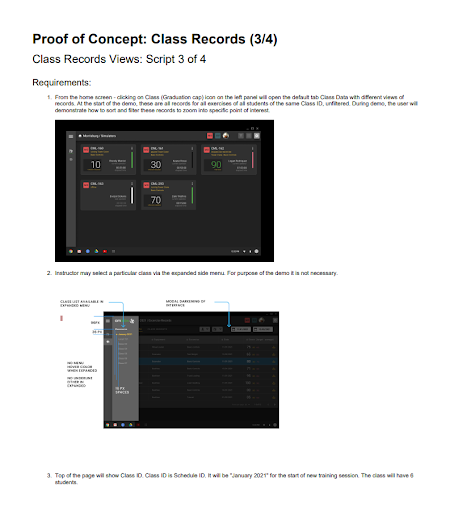Training Management System
Proof of Concept
designer
Clint Lewis
Context:
Heavy equipment operation in the construction industry is a skilled profession that requires a balance of efficiency, safety, and precision.
Training student operators on the actual vehicles can be costly as fuel and repair costs are high. To develop the required skills simulated vehicles can provide a SAFE and realistic experience without impacting the actual construction machines until the students are ready to operate them.
OEM heavy equipment manufacturers (John Deere, CAT, Komatsu…) have also connected their vehicles to cloud servers and heavy vehicle operation students need to be aware of this reality.
On the construction site worker, logistics and vehicle data are mined to increase the ROI and safety of construction projects and reduce risk for all involved.


User Problem:
The current simulator instructor-student monitoring solution does not allow Instructors to view all the simulators in a classroom. In fact it can only monitor a single specific simulator.
Instructors would like to monitor the real-time performance of all students and identify the people who need help and be able to freely circulate through the class while doing so.
This user problem had been validated by product management via customer interviews
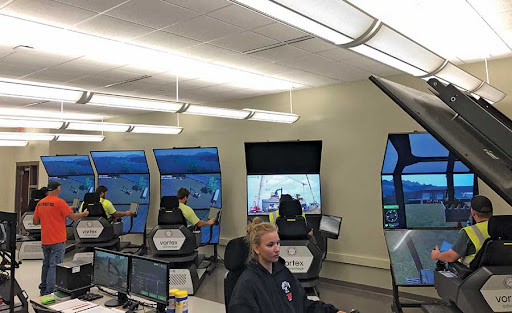
Cloud Connected Proof of Concept (POC):
To solve this problem we felt that the simulators would need to be cloud connected to allow real-time data monitoring of student performance during usage. Data analytics and reports would also provide instructors a way to pin point where students were having trouble.
In addition to the instructor benefit, we could maintain the computer systems in our clients’ simulator devices automatically and remotely thus lowering hardware support costs.
The cloud connection would also allow for the delivery of new training content and quicker bug fixes through frequent updates.
Even though the value provided by this technology seemed obvious, we had never developed any web or cloud based products and a substantial investment would need to be made.
The decision was made by the executive team to create a “proof of concept” to demonstrate our expertise to our existing investors with the hope of securing additional funding.
POC Outcomes
New Investors:
CM Labs found new primary investors as a result of the POC work
User/Product Centered Approach:
The company is unlearning mistakes of the past and basing product requirements on user research and validation to enable a user/product centered business rather than being project based.
Productize:
As the POC was a prototype it was not ready to be productized, but the key learnings are being applied to the new cloud platform product line.
(design, product and development)
Simulator Training Management System Prototype flow
- 8 month time frame
- Demonstrate capabilities and secure investment
- Explore new markets
- Improve our current product offering
Tech Stack
- Use “off the shelf” components
- Use “Mocked database”
- Demonstrate bi directional web communication
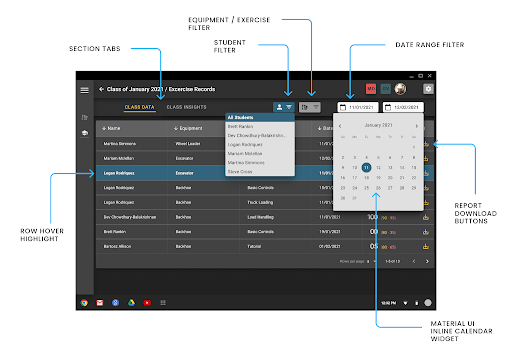
The process I followed to design the solution made use of the standard “double diamond” approach.
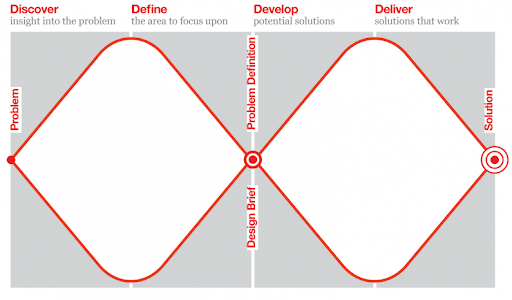
Use Cases:
Product management had defined the use cases we wanted to show during the POC demonstration
- Instructor viewing a student record of a previous training session.
- Instructor monitoring the real-time performance of a student using the simulator.
- Instructor viewing a report with recommendations to improve student performance based on mined data
Process: Design Discovery Phase
As a first step in the UX discovery process I researched other construction tech products both in the cloud and hardware space to gather insights into design patterns, UI styles, and terminology.
Also, I did a deep dive into dashboard design and I looked into other applications that were in the heavy vehicle monitoring space.
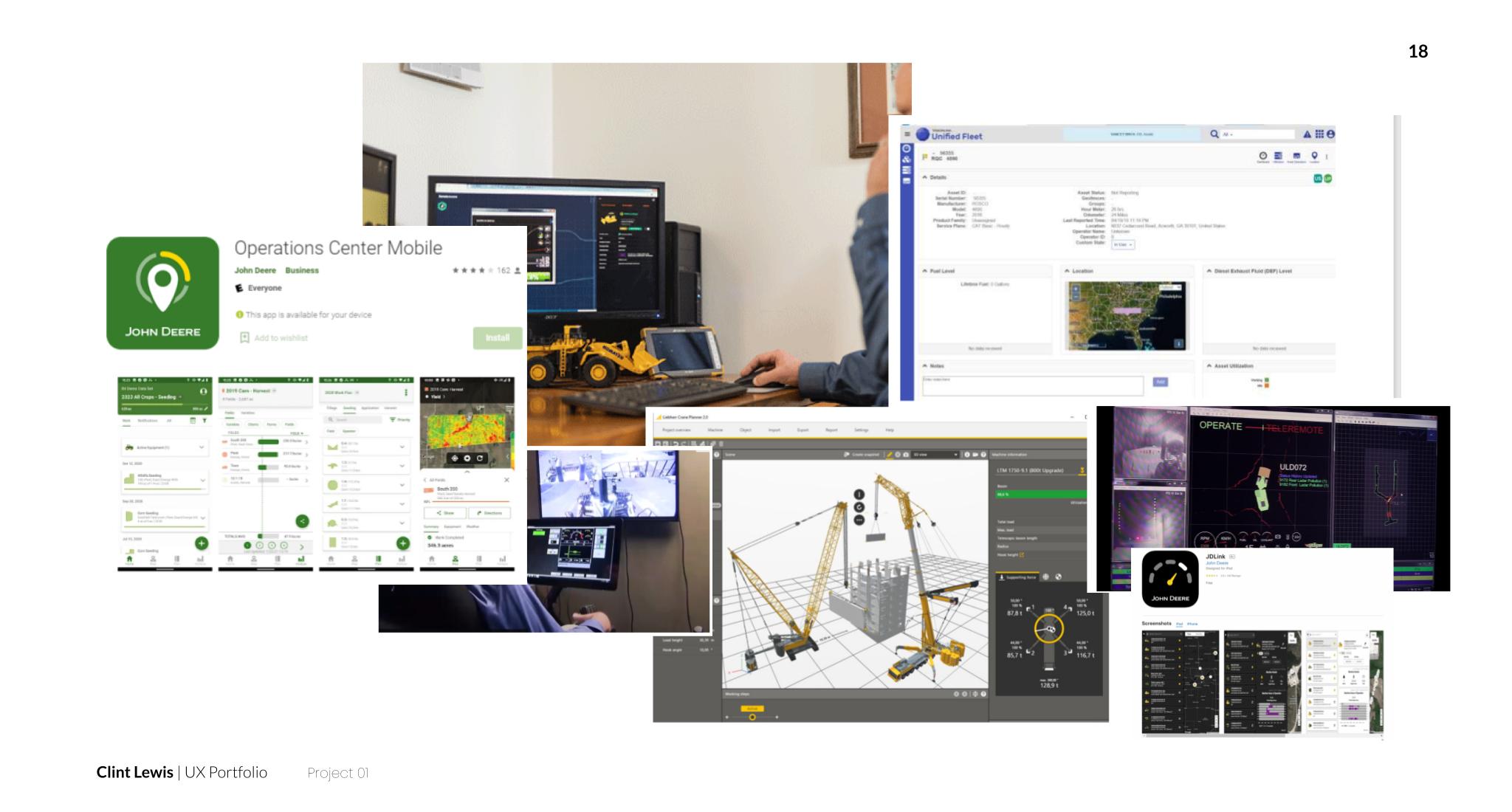
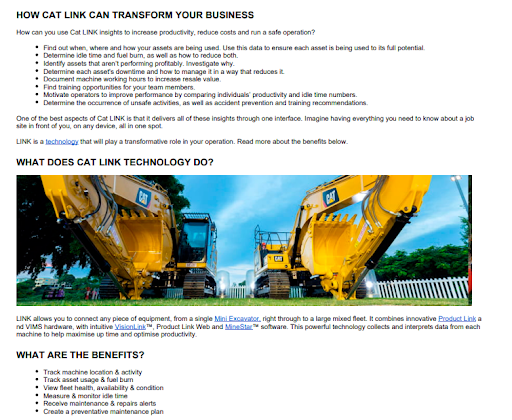
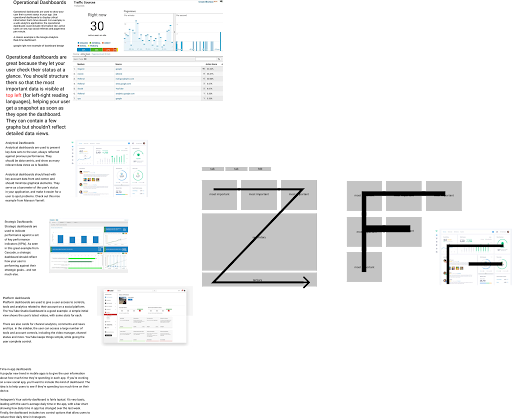
Process: Define Phase
After the discovery I grouped all of the information into categories to understand the industry trends and where does value lie in the workflow.
In addition a more detailed user journey was mapped out. One area I identified for potential growth of was in the autonomous vehicle space, as our simulators could train AI models that could potentially pilot heavy vehicles. Even though this was not the focus of the POC, this AI concept did inform the look and feel of my designs.

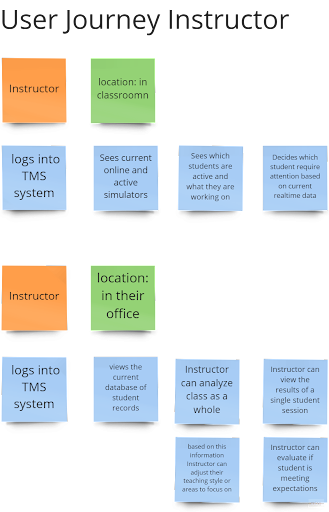
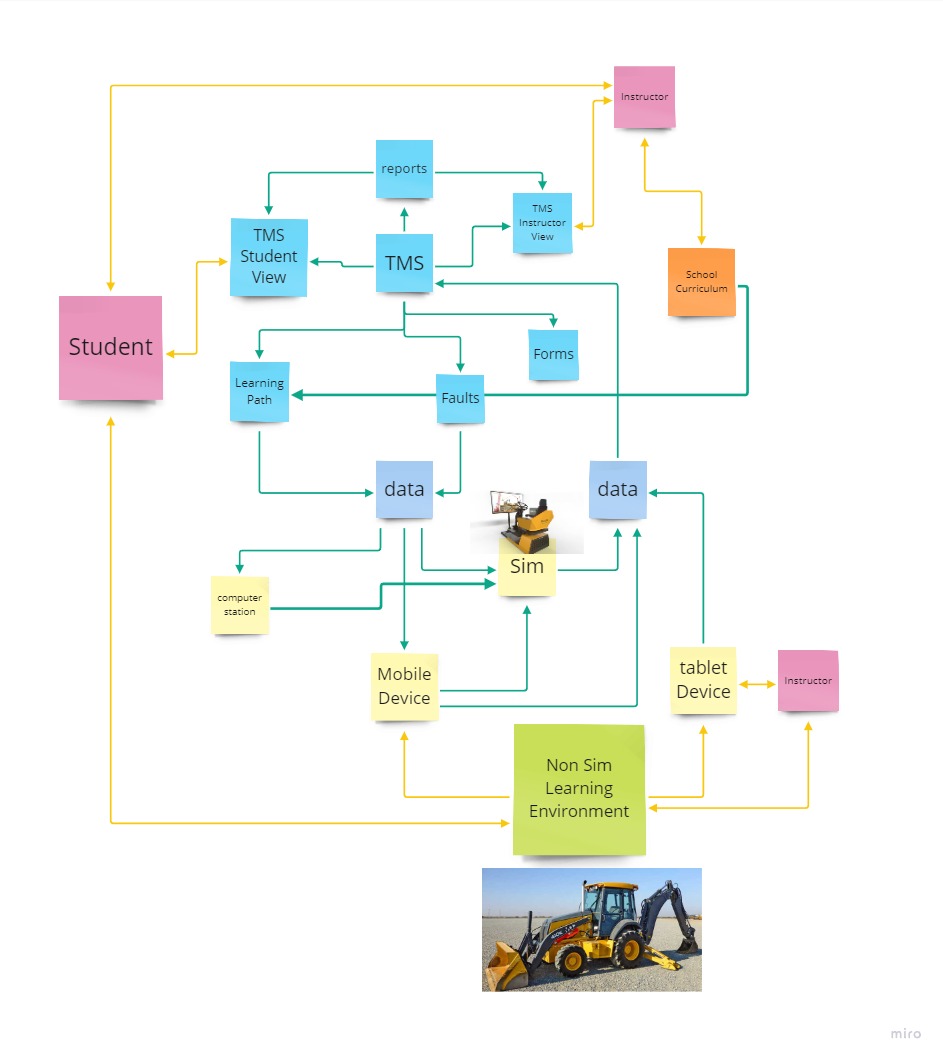
Process: Develop Phase
POC UX Guiding Principles & Design Decisions
Based on the high level goals defined for the POC, I set some guiding principles for my design work during the “develop phase”
As this was a pitch, visual aesthetics were important as well as a continuation of the current look of CM Labs products.
UI glitches could not be tolerated as it could be seen as poor quality.
Ease of use
The presenter must communicate the main workflow quickly to capture the audience’s attention.
This would also be valuable for the eventual end user to reduce unnecessary complexity in the interface and workflow.
Forward Looking
Even though the application
took many shortcuts in the development, the UX design output should be relevant for future products.
Use pre-existing design assets to quickly iterate and prototype interactions
Deliver Phase
As part of the “Deliver” phase of the double diamond, Developer hand off of design was very Important. I attached detailed documents for all development tasks and followed up with the implementation.
I also made use of prototypes to communicate design intent to the product, executive and development for approval.
